Effect of Yield Strength Distribution Welded Joint on Crack Propagation Path and Crack Mechanical Tip Field
Abstract
1. Introduction
2. Materials and Methods
2.1. Inhomogeneous Material Model
2.2. XFEM Theoretical Basis
3. Numerical Simulation Procedures
3.1. Analysis Steps
3.2. Material Model
3.3. Mesh Generation
4. Results Discussion
4.1. The Results of Yield Strength Change in x Direction
4.2. The Results of Yield Strength Change in y Direction
5. Conclusions
- When the crack propagates in the nonuniformly distributed yield strength material, it tends to propagate to the material with low yield strength. The crack length increases with the decrease of yield strength.
- Keep the stress intensity factor constant. When the crack propagates to the low yield strength side, the area of the Von Mises stress decreases, but the area of equivalent plastic strain increases; when the crack propagates to the high yield strength side, the area of the Von Mises stress distribution goes up, but the area of equivalent plastic strain goes down.
- When the change of yield strength is perpendicular to the crack propagation direction, the Von Mises stress field and the equivalent plastic strain field at the crack tip deflect to the low yield strength side. The greater the absolute value of the yield strength gradient is, the more obvious the deflection degree is.
- When the yield strength is parallel to the crack propagation direction, the equivalent plastic strain field at the crack tip spread to the low yield strength side. The Von Mises stress field at the crack tip spread to the high yield strength side.
Author Contributions
Funding
Institutional Review Board Statement
Informed Consent Statement
Data Availability Statement
Conflicts of Interest
References
- Dou, G.; Cao, R.; Cai, C.; Han, C.; Guo, X.; Jiang, Y.; Chen, J. Effects of Boron Content on the Microstructure and Impact Toughness of 12Cr1MoVR Low-Alloy Heat-Resistant Steel Weld Metals. Materials 2021, 14, 926. [Google Scholar] [CrossRef]
- Wang, H.; Wang, Y.; Li, X.; Wang, W.; Yang, X. Influence of Assembly Gap Size on the Structure and Properties of SUS301L Stainless Steel Laser Welded Lap Joint. Materials 2021, 14, 996. [Google Scholar] [CrossRef] [PubMed]
- Szymczak, T.; Makowska, K.; Kowalewski, Z.L. Influence of the Welding Process on the Mechanical Characteristics and Fracture of the S700MC High Strength Steel under Various Types of Loading. Materials 2020, 13, 5249. [Google Scholar] [CrossRef] [PubMed]
- Chopra, O.K.; Chung, H.M.; Kassner, T.F.; Park, J.H.; Shack, W.J.; Zhang, J.; Brust, F.W.; Dong, P. Current research on environmentally assisted cracking in light water reactor environments. Nucl. Eng. Des. 1999, 194, 205–223. [Google Scholar] [CrossRef]
- Ming, H.L.; Zhu, R.L.; Zhang, Z.M.; Wang, J.Q.; Han, E.H.; Ke, W.; Su, M.X. Microstructure local mechanical properties and stress corrosion cracking susceptibility of an SA508-52M-316LN safe-end dissimilar metal weld joint by GTAW. Mater. Sci. Eng. 2016, 669, 279–290. [Google Scholar] [CrossRef]
- Xue, H.; Li, Z.; Lu, Z.; Shoji, T. The effect of a single tensile overload on stress corrosion cracking growth of stainless steel in a light water reactor environment. Nucl. Eng. Des. 2011, 241, 731–738. [Google Scholar] [CrossRef]
- Burlayenko, V.N.; Sadowski, T.; Dimitrova, S. Three-dimensional free vibration analysis of thermally loaded FGM sandwich plates. Materials 2019, 12, 2377. [Google Scholar] [CrossRef] [PubMed]
- Szekrényes, A. Analytical solution of some delamination scenarios in thick structural sandwich plates. J. Sandw. Struct. Mater. 2019, 21, 1271–1315. [Google Scholar] [CrossRef]
- Geng, S.N.; Sun, J.S.; Guo, L.Y.; Wang, H.Q. Evolution of microstructure and corrosion behavior in 2205 duplex stainless steel GTA-welding joint. J. Manuf. Process. 2015, 19, 32–37. [Google Scholar] [CrossRef]
- Fan, K.; Wang, G.Z.; Xuan, F.Z.; Tu, S.T. Local fracture resistance behavior of interface regions in a dissimilar metal welded joint. Eng. Fract. Mech. 2015, 136, 279–291. [Google Scholar] [CrossRef]
- Fan, K.; Wang, G.Z.; Xuan, F.Z.; Tu, S.T. Local failure behavior of a dissimilar metal interface region with mechanical heterogeneity. Eng. Fail. Anal. 2016, 59, 419–433. [Google Scholar] [CrossRef]
- Fan, K.; Wang, G.Z.; Xuan, F.Z.; Tu, S.T. Effects of work hardening mismatch on fracture resistance behavior of bi-material interface regions. Mater. Des. 2015, 68, 186–194. [Google Scholar] [CrossRef]
- Xue, H.; Ogawa, K.; Shoji, T. Effect of welded mechanical heterogeneity on local stress and strain ahead of stationary and growing crack tips. Nucl. Eng. Des. 2009, 239, 628–640. [Google Scholar] [CrossRef]
- Xue, H.; Wang, Z.W.; Zhao, L.Y.; Qiao, M.; Wang, W.B. Effect of Strength Matching of Welded Joint on Stress Corrosion Cracking in Nuclear Power Structures. Appl. Mech. Mater. 2013, 457–458, 593–596. [Google Scholar] [CrossRef]
- Zhao, L.Y.; Xue, H.; Tang, W.; Fang, X.R. Effect of welded mechanical heterogeneity on local stress and strain ahead of growing crack tips in the piping welds. Proc. ASME Press. Vessel. Pip. Conf. 2011, 3, 223–232. [Google Scholar]
- Zhao, L.Y.; Xue, H.; Wang, Z.W. Research on local plastic strain at crack tip of dissimilar weld joints in nuclear power plant. J. Chem. Pharm. Res. 2014, 6, 2346–2352. [Google Scholar]
- Cetinel, H.; Uyulgan, B.; Aksoy, T. The effect of yield strength mismatch on the fracture behavior of welded nodular cast iron. Mater. Sci. Eng. 2004, 387, 357–360. [Google Scholar] [CrossRef]
- An, G.B.; Ohata, M.; Mochizuki, M.; Bang, H.S.; Toyoda, M. Effect of strength mismatch on ductile crack initiation behavior from notch root under static loading. Key. Eng. Mater. 2005, 297, 756–761. [Google Scholar] [CrossRef]
- Rakin, M.; Medjo, B.; Gubeljak, N.; Sedmak, A. Micromechanical assessment of mismatch effects on fracture of high-strength low alloyed steel welded joints. Eng. Fract. Mech. 2013, 109, 221–235. [Google Scholar] [CrossRef]
- Wang, H.T.; Wang, G.Z.; Xuan, F.Z.; Tu, S.T. Numerical investigation of ductile crack growth behavior in a dissimilar metal welded joint. Nucl. Eng. Des. 2011, 241, 3234–3243. [Google Scholar] [CrossRef]
- Moltubakk, T.; Thaulow, C.; Zhang, Z.L. Application of local approach to inhomogeneous weld. Influence of crack position and strength mismatch. Eng. Fract. Mech. 1999, 62, 445–462. [Google Scholar] [CrossRef]
- Cetinel, H.; Aksoy, T. The effect of undermatching on crack tip constraint in a welded structure of nodular irons. J. Mater. Proc. Technol. 2008, 198, 183–190. [Google Scholar] [CrossRef]
- Dassault Systèmes Simulia Corp. ABAQUS 6.14 User Subroutines Reference Guide 6.14; Dassault Systèmes Simulia Corp: Providence, RI, USA, 2014. [Google Scholar]
- Kong, X.H.; Wang, Z.J. Analysis and Experiment of Compressive Residual Strength of composite Laminates with Holes. Adv. Mater. Res. 2014, 3187, 43–52. [Google Scholar] [CrossRef]
- Wang, M.; Fei, Q.G.; Zhang, P.W.; Kongstantinos, G.; Anthymidis, A. Modified Fatigue Damage Model for High-Cycle Fatigue Life Prediction. Adv. Mater. Sci. Eng. 2016, 2016. [Google Scholar] [CrossRef]
- Dassault Systèmes Simulia Corp. ABAQUS 6.14 Theory Guide 6.14; Dassault Systèmes Simulia Corp.: Providence, RI, USA, 2014. [Google Scholar]
- Stolarska, M.; Chopp, D.L.; Moës, N.; Belytschko, T. Modelling crack growth by level sets in the extended finite element method. Int. J. Numer. Methods Eng. 2001, 51, 943–960. [Google Scholar] [CrossRef]
- Zhang, C.; Cao, P.; Cao, Y.; Li, J. Using finite element software to simulation fracture behavior of three-point bending beam with initial crack. J. Softw. 2013, 8, 1145–1150. [Google Scholar] [CrossRef][Green Version]
- Shedbale, A.S.; Singh, I.V.; Mishra, B.K.; Sharma, K. Ductile failure modeling and simulations using coupled FE–EFG approach. Int. J. Fract. 2017, 203, 183–209. [Google Scholar] [CrossRef]
- Irwin, G.R. Analysis of stresses and strains near the end of a crack transversing a plate. J. Appl. Mech. 1957, 24, 361–364. [Google Scholar] [CrossRef]
- Dassault Systèmes Simulia Corp. ABAQUS 6.14 Analysis User’s Manual 6.14; Dassault Systèmes Simulia Corp.: Providence, RI, USA, 2014. [Google Scholar]
- Burstow, M.C.; Howard, I.C.; Ainsworth, R.A. The influence of constraint on crack tip stress fields in strength mismatched welded joints. J. Mech. Phys. Solids. 1998, 46, 845–872. [Google Scholar] [CrossRef]
- Zhang, Z.L.; Hauge, M.; Thaulow, C. Two-parameter characterization of the near-tip stress fields for a bi-material elastic–plastic interface crack. Int. J. Fract. 1996, 79, 65–83. [Google Scholar] [CrossRef]
- Yang, J.; Wang, G.Z.; Xuan, F.Z.; Tu, S.T.; Liu, C.J. Out-of-plane constraint effect on local fracture resistance of a dissimilar metal welded joint. Mater. Des. 2014, 55, 542–550. [Google Scholar] [CrossRef]
- Samal, M.K.; Balani, K.; Seidenfuss, M.; Roos, E. An experimental and numerical investigation of fracture resistance behaviour of a dissimilar metal welded joint. Mech. Eng. Sci. 2009, 223, 1507–1523. [Google Scholar] [CrossRef]
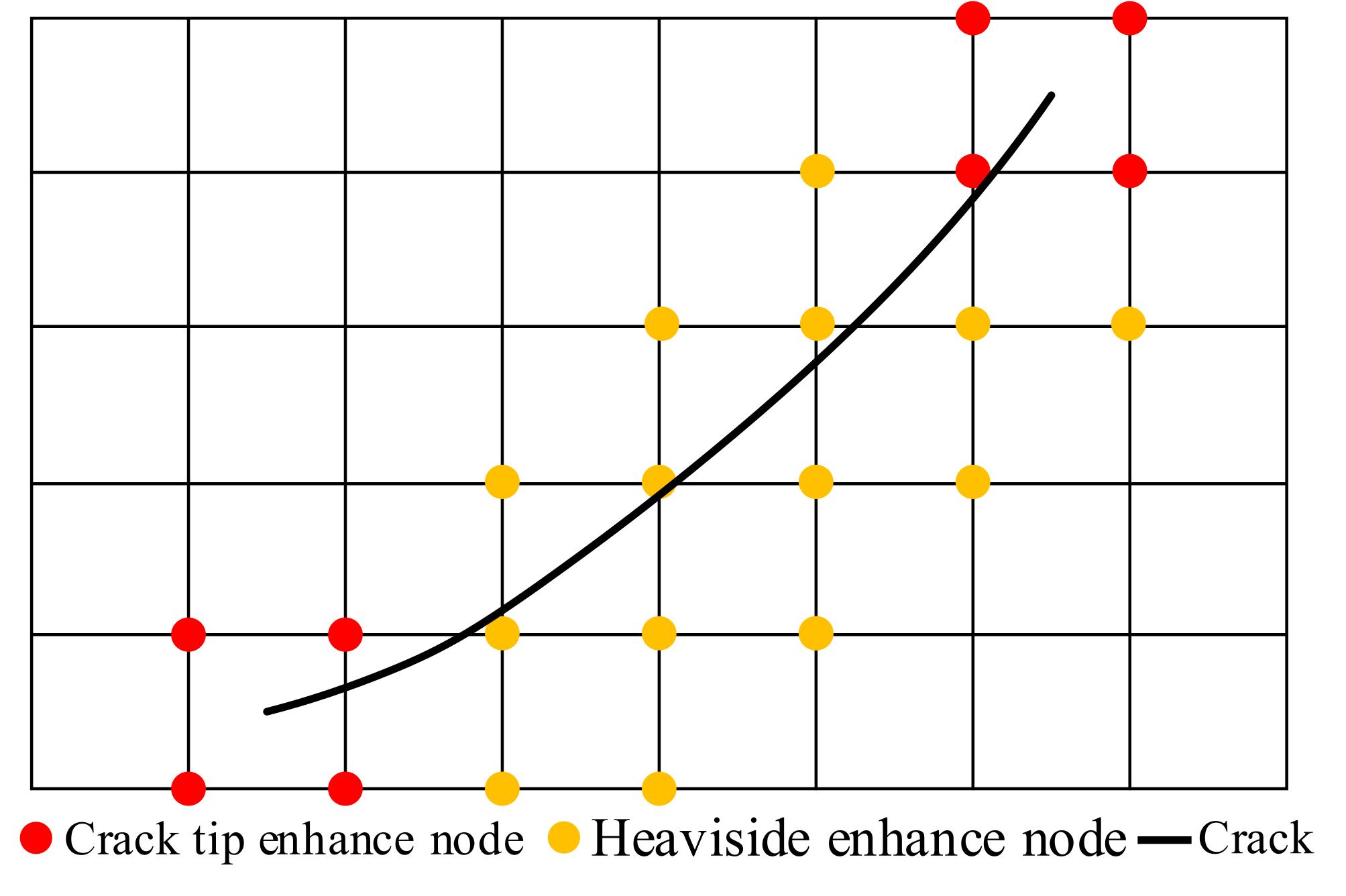
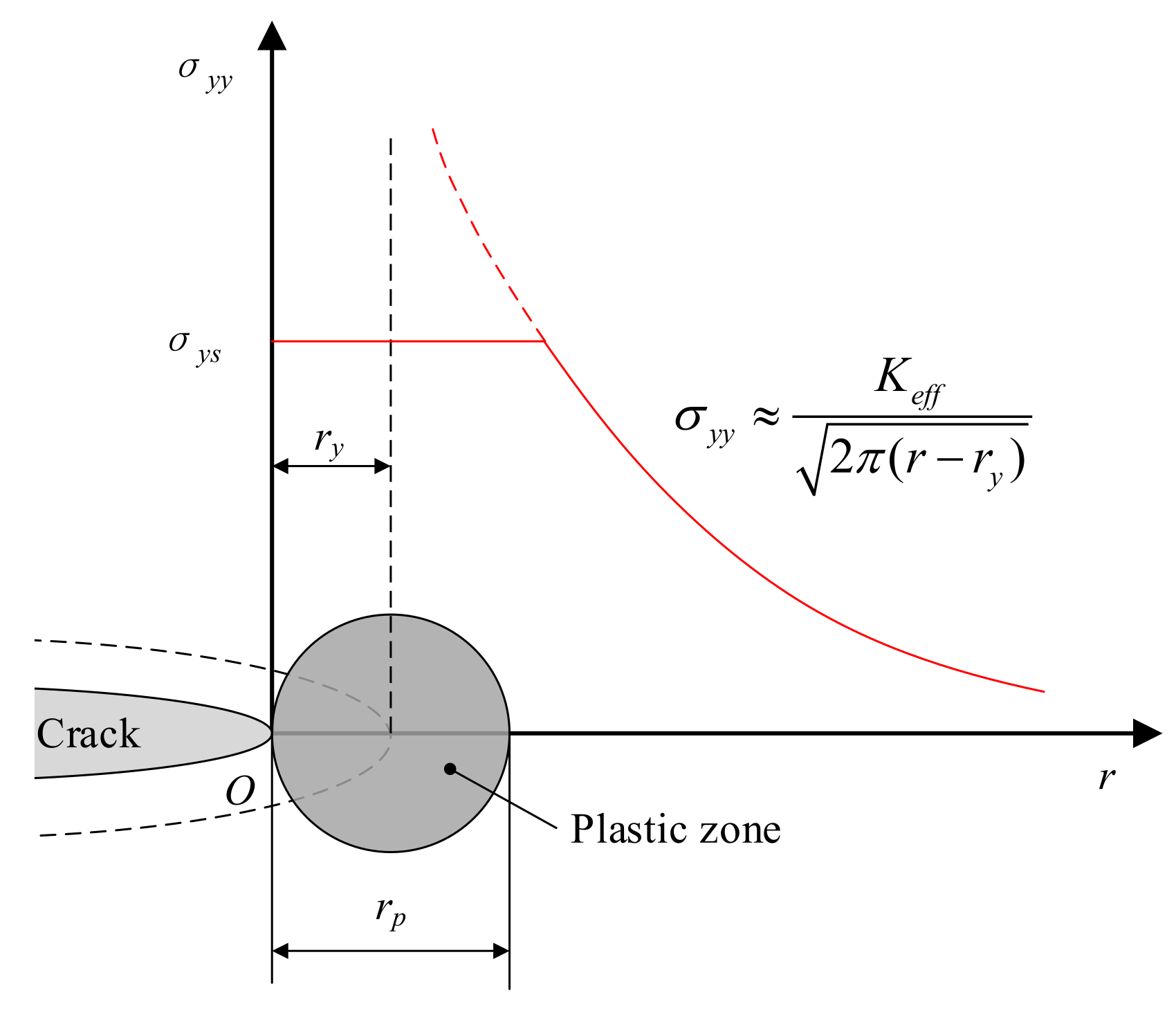
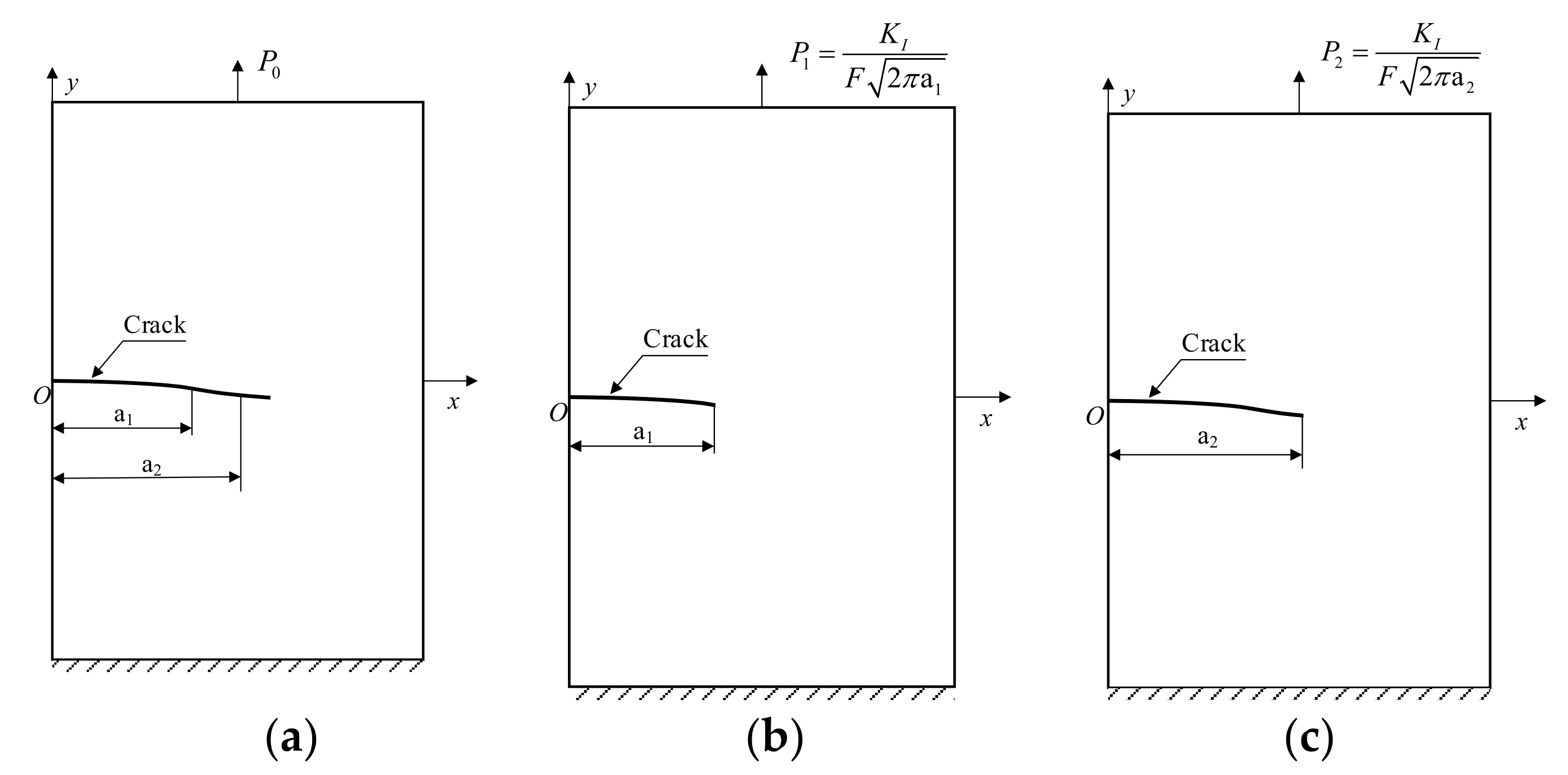
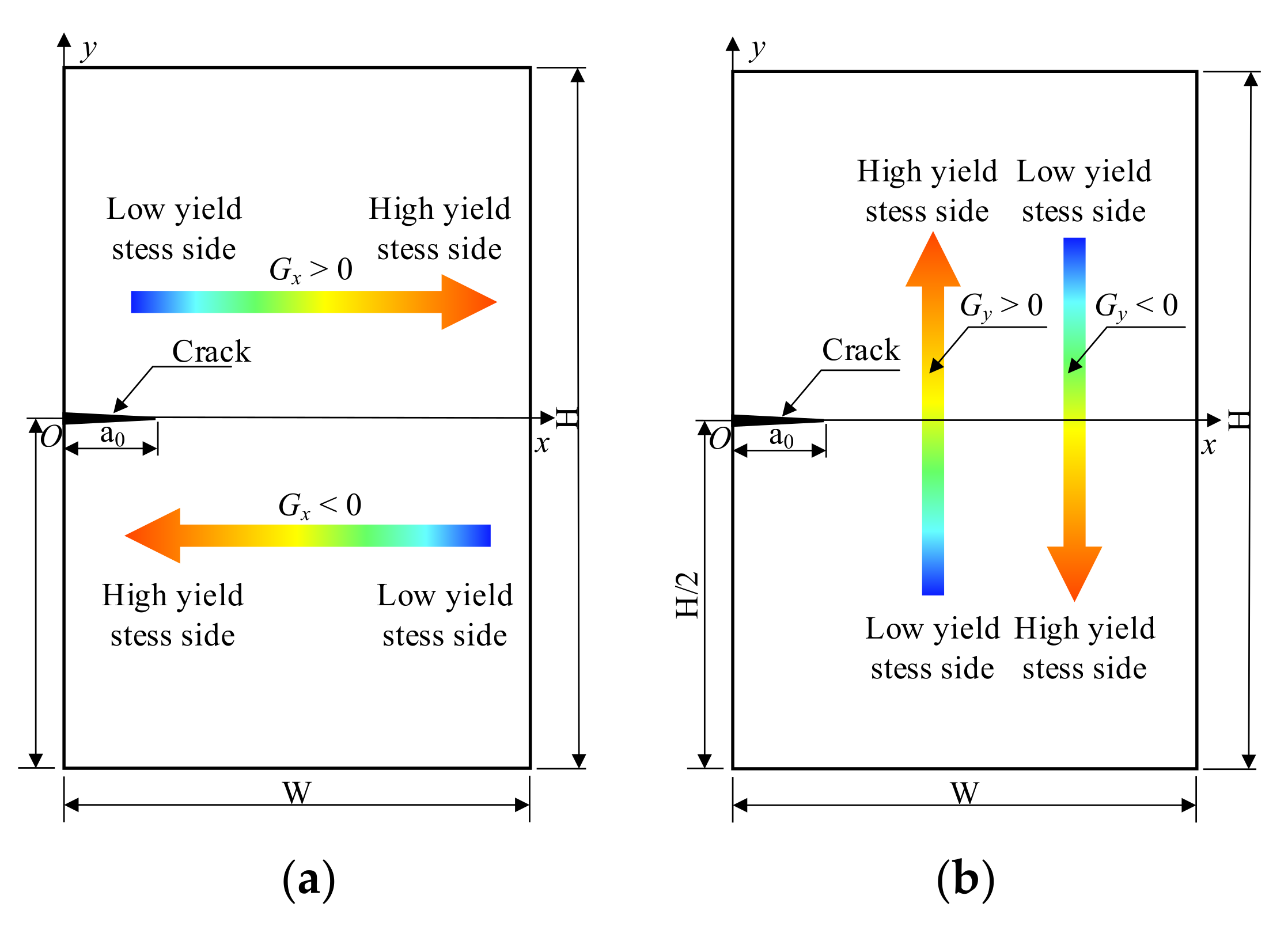
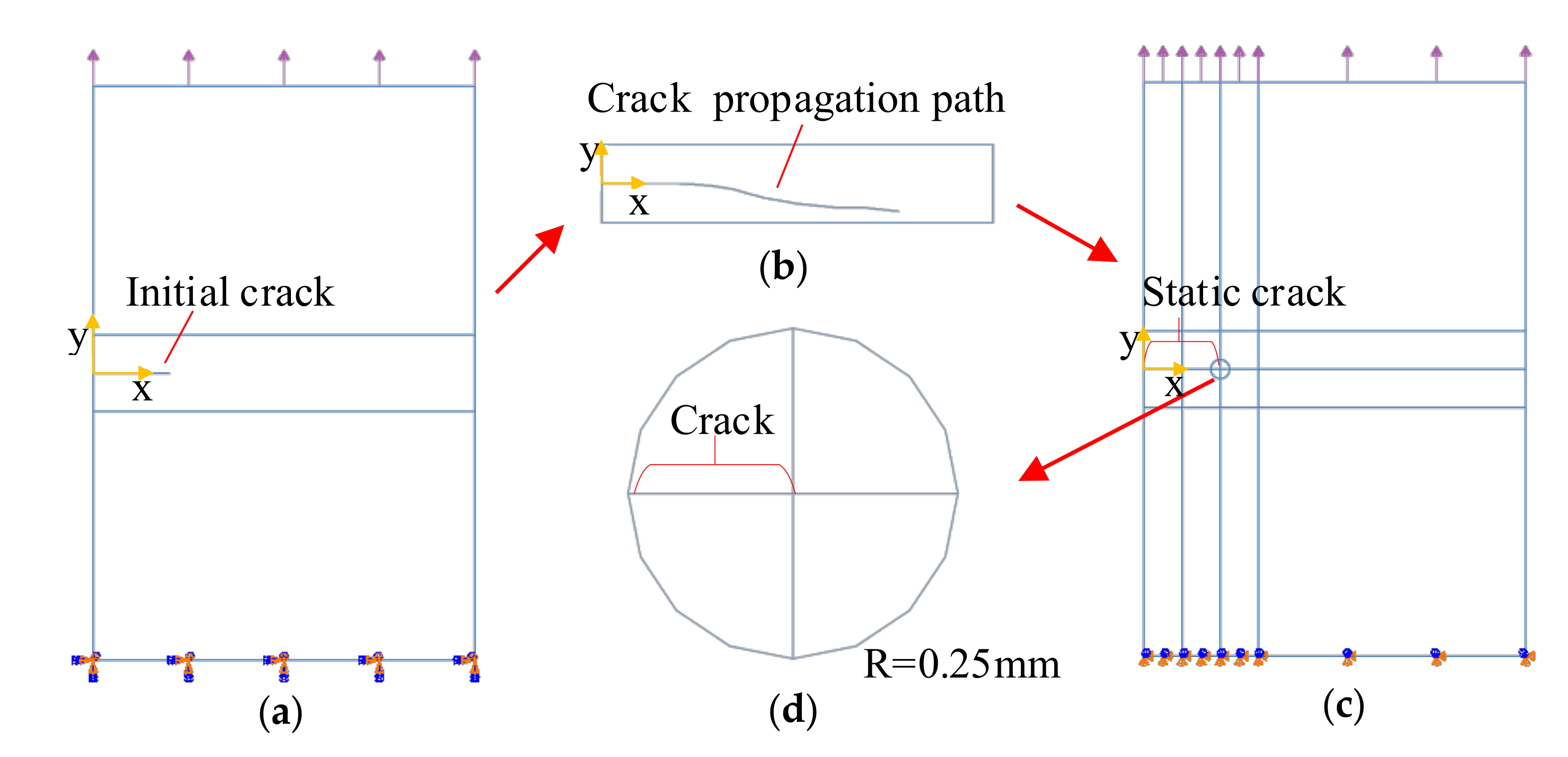
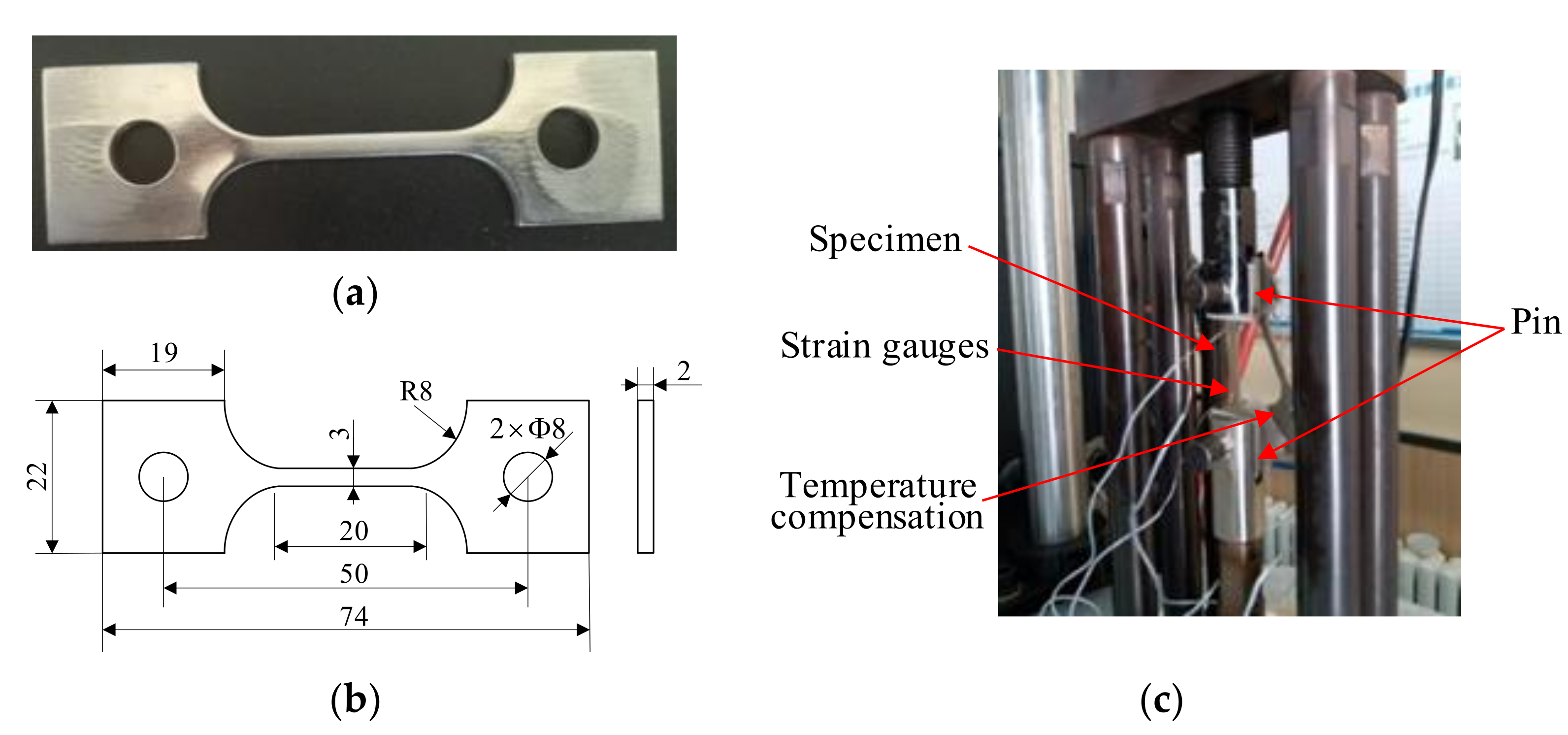
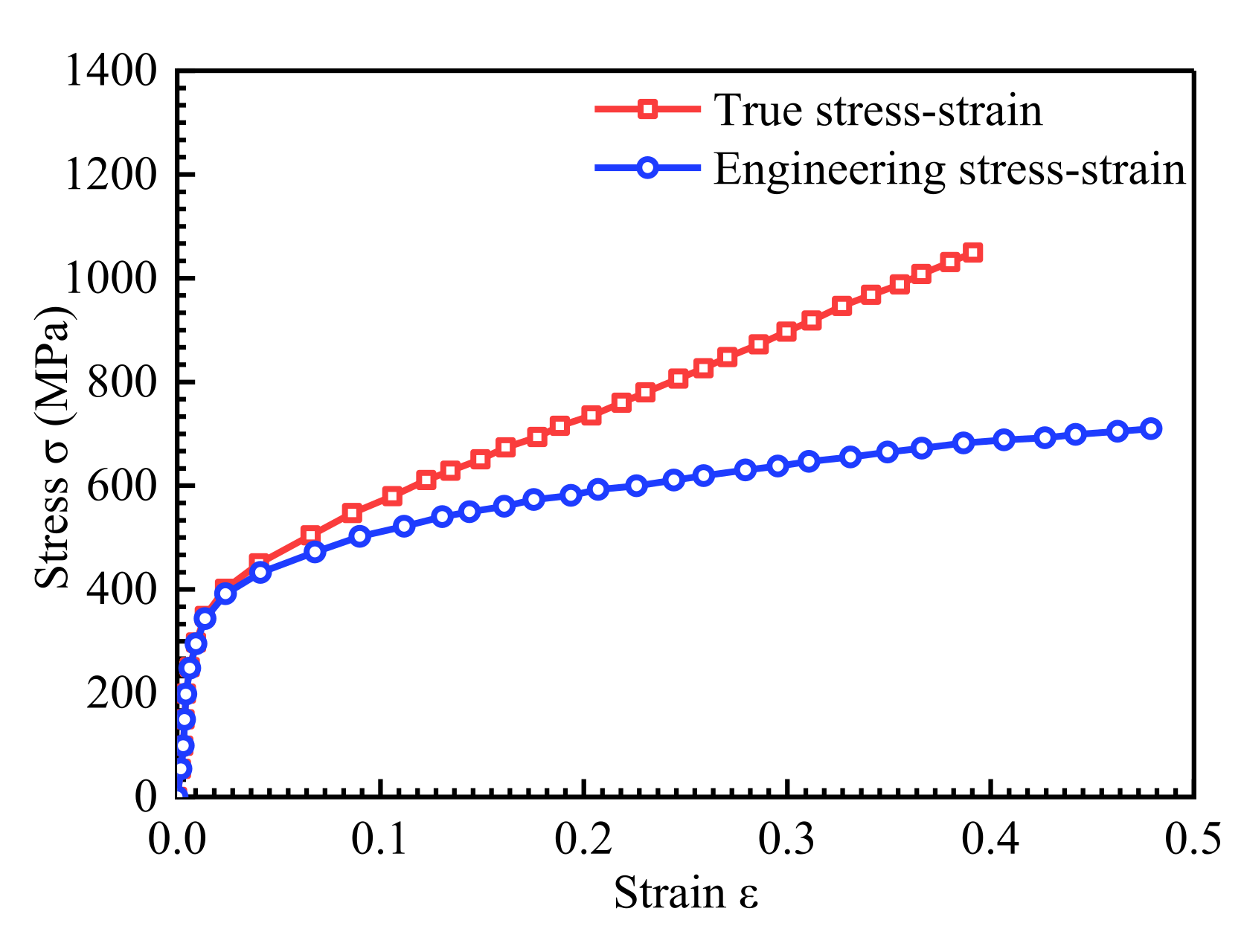
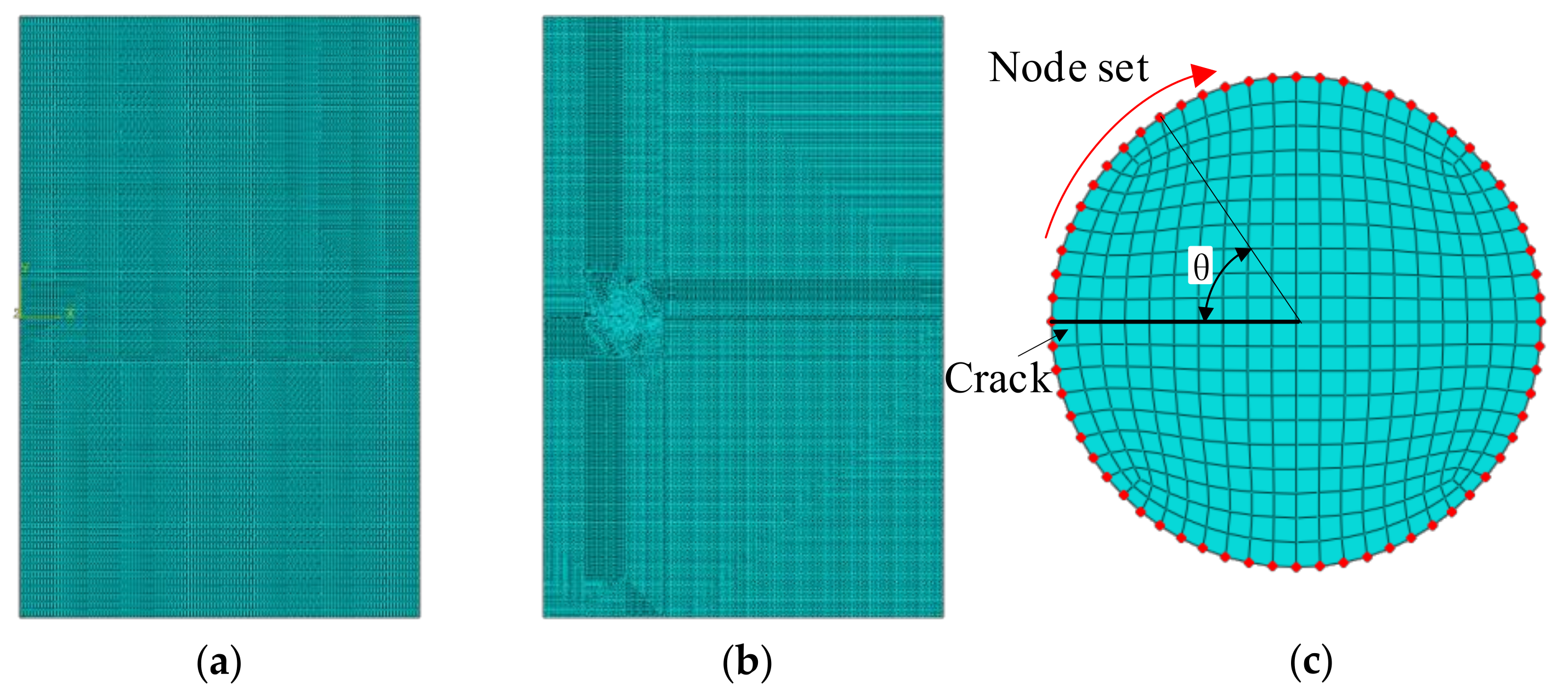
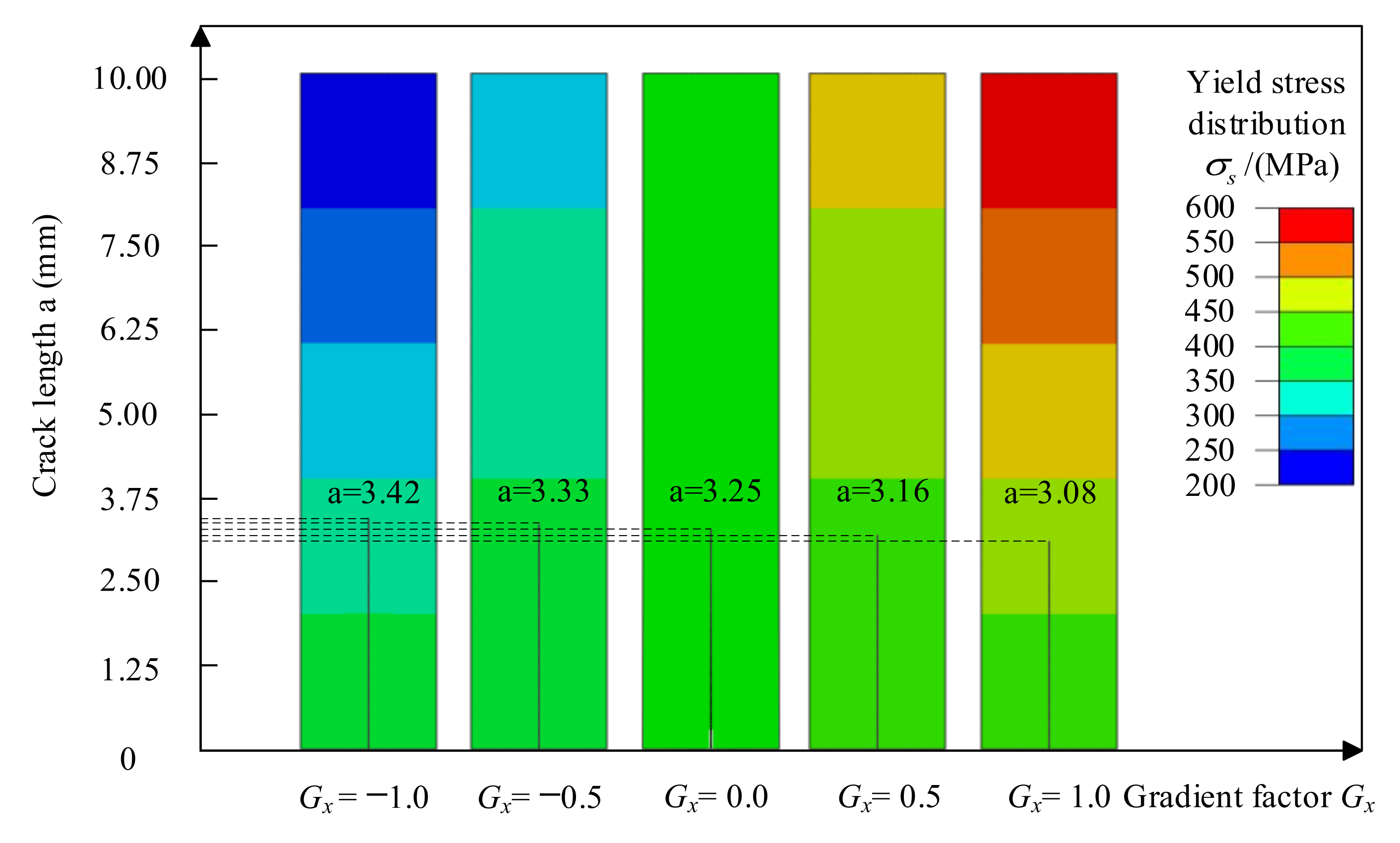
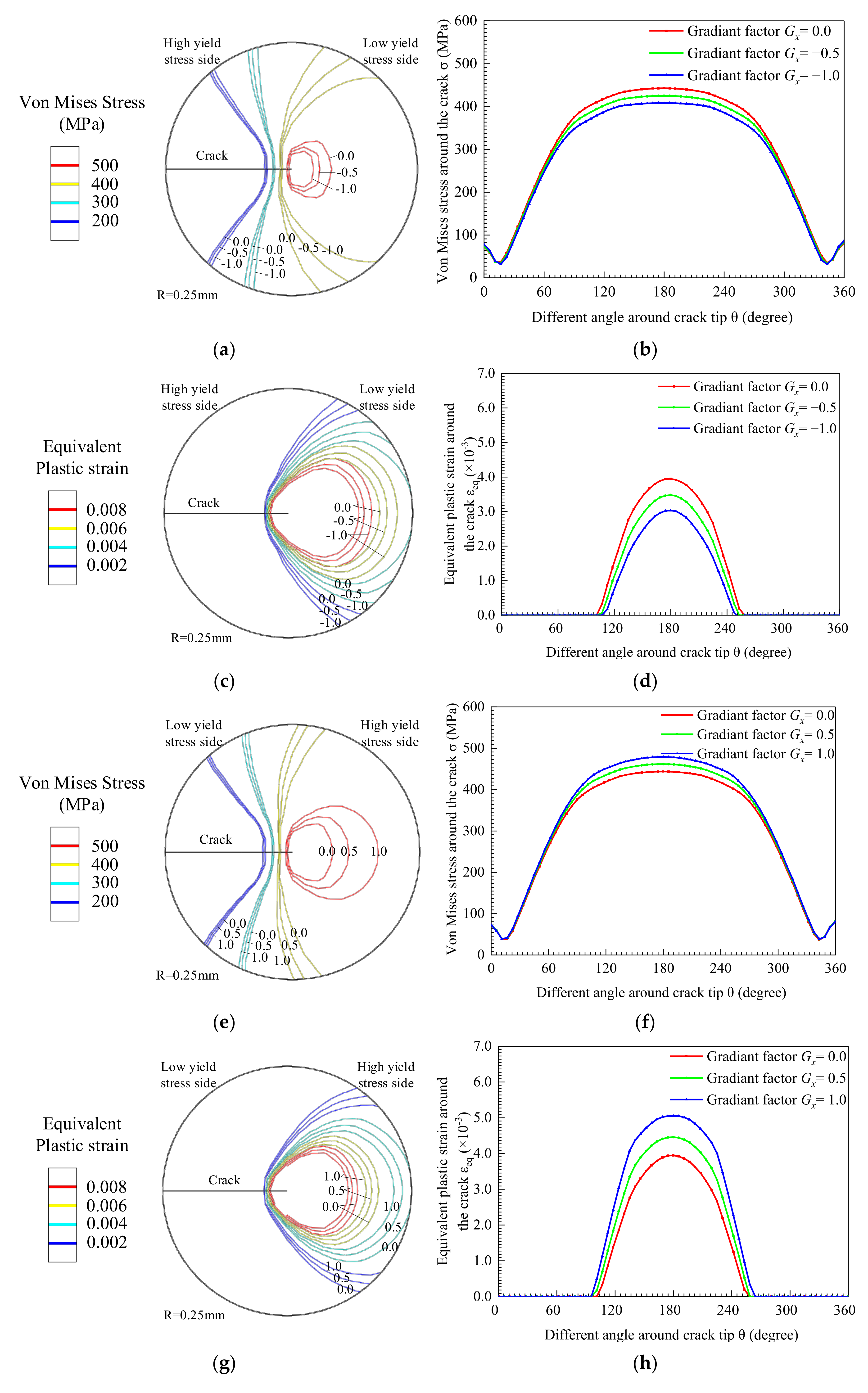
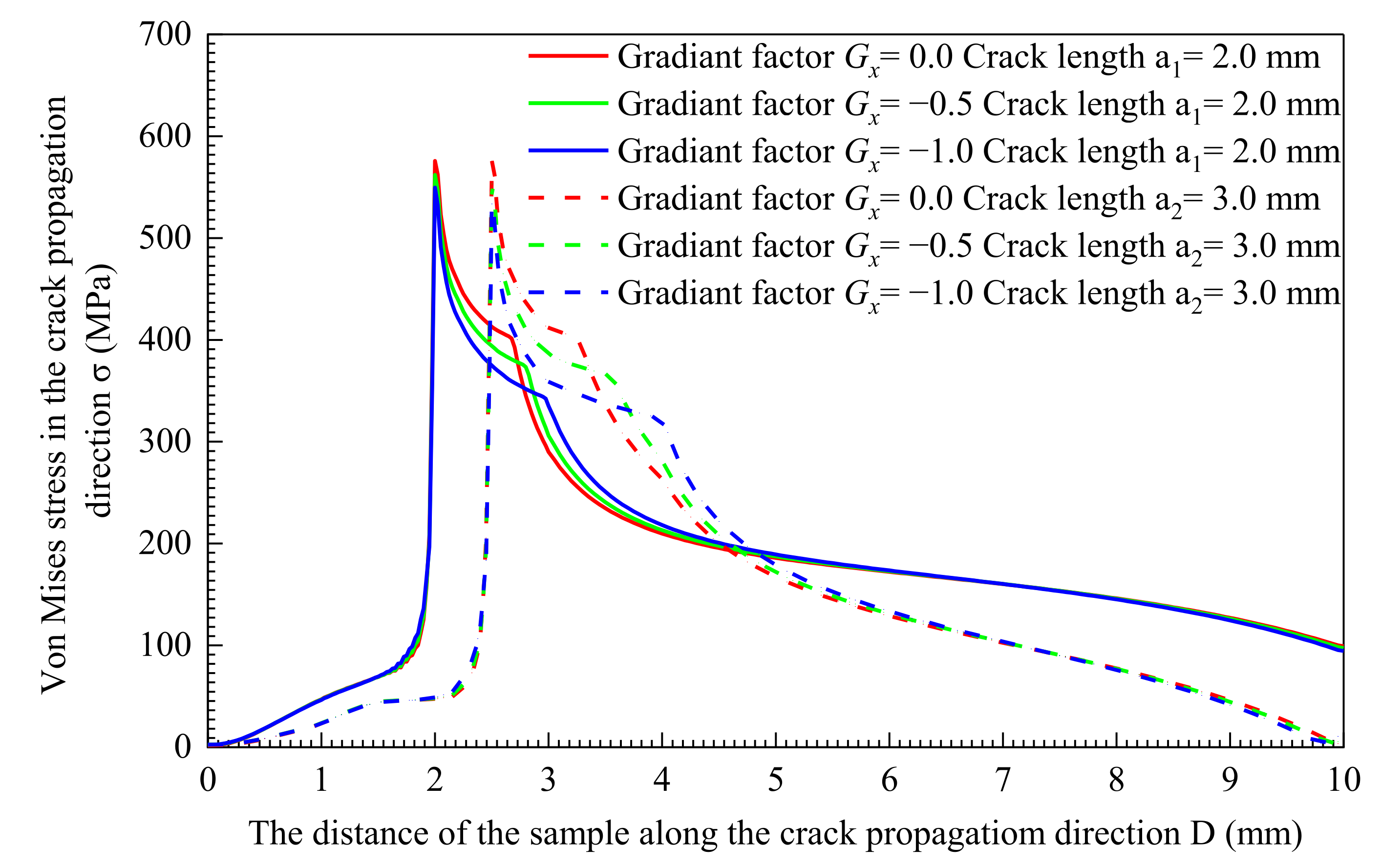
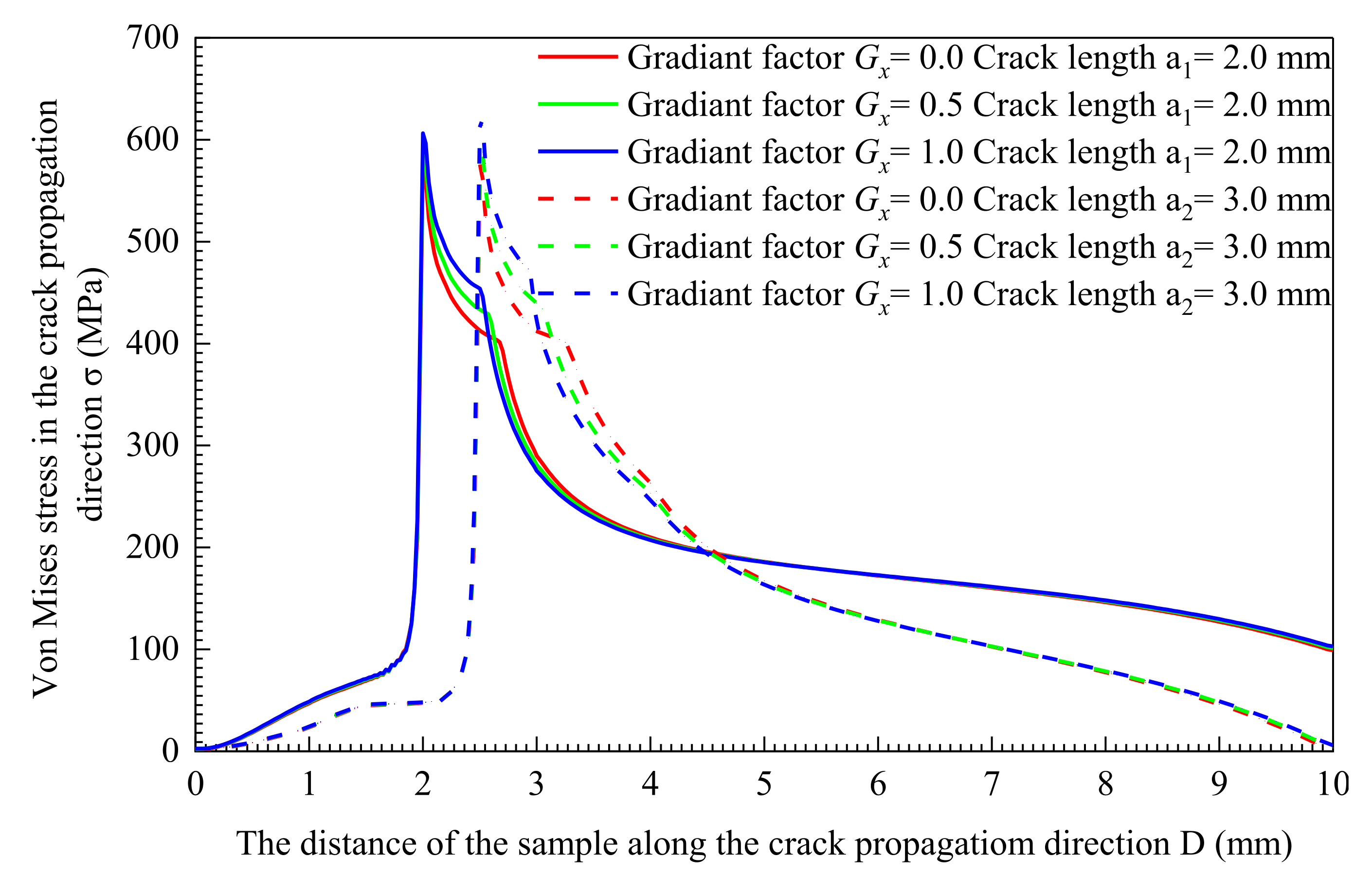

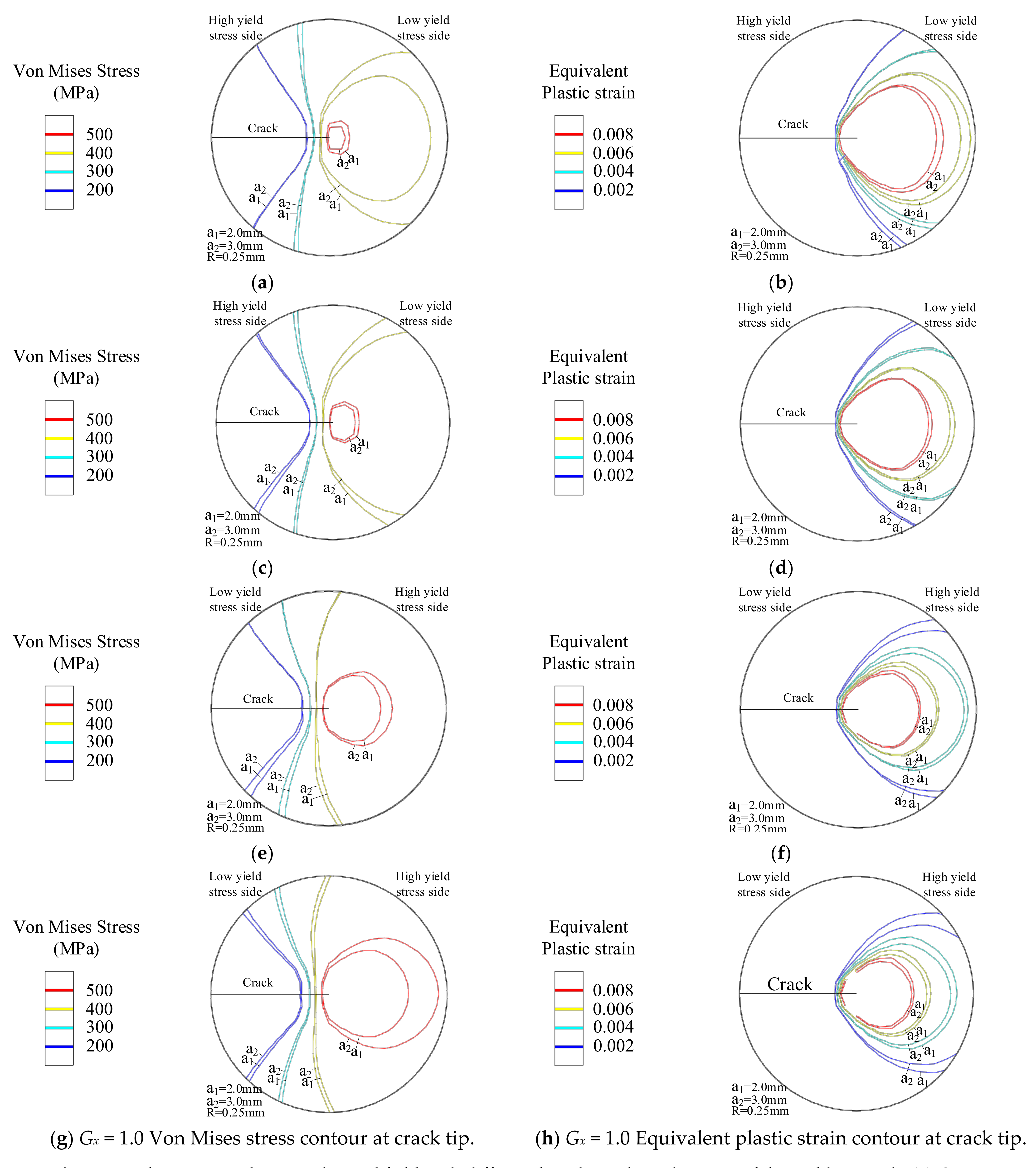
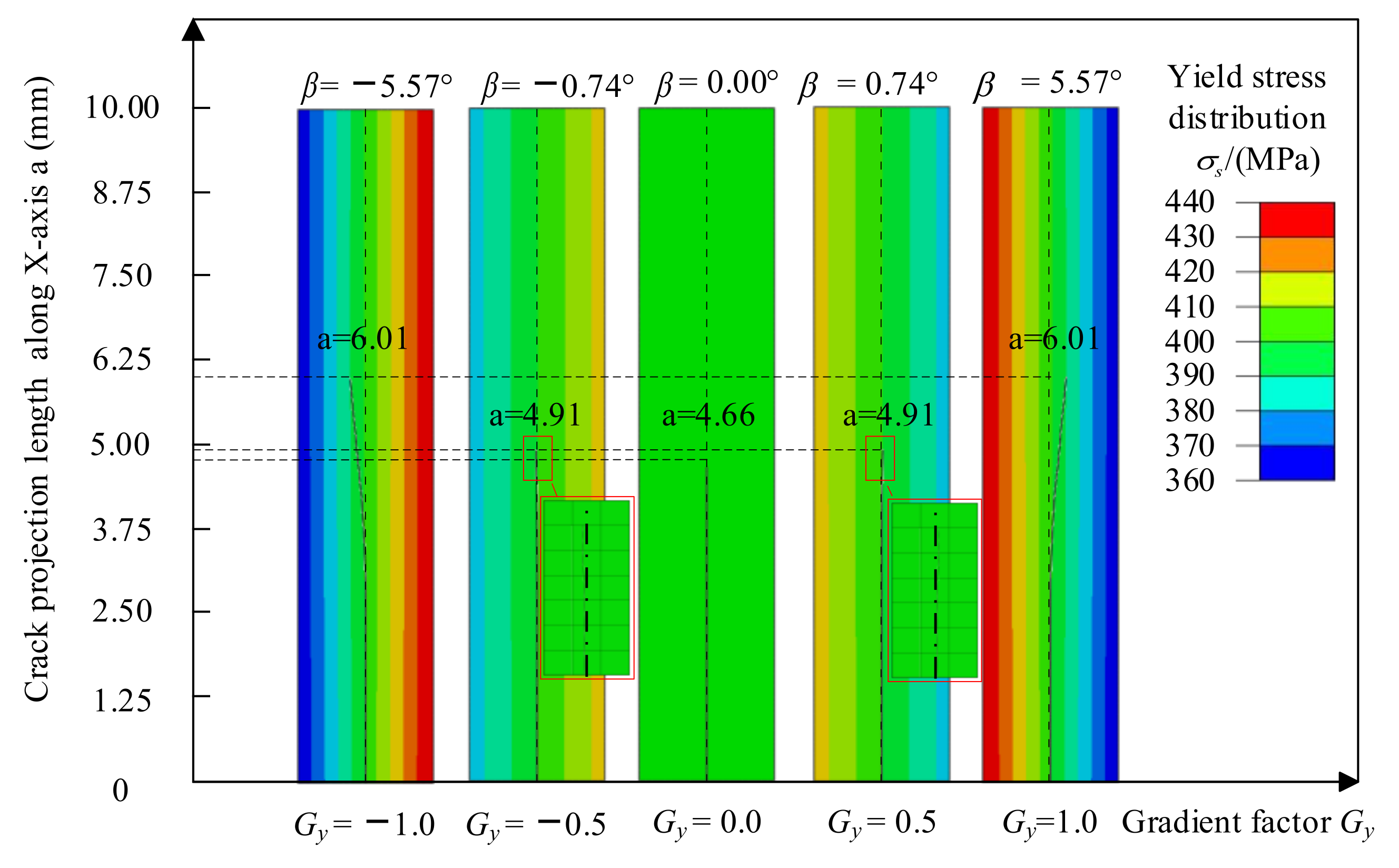
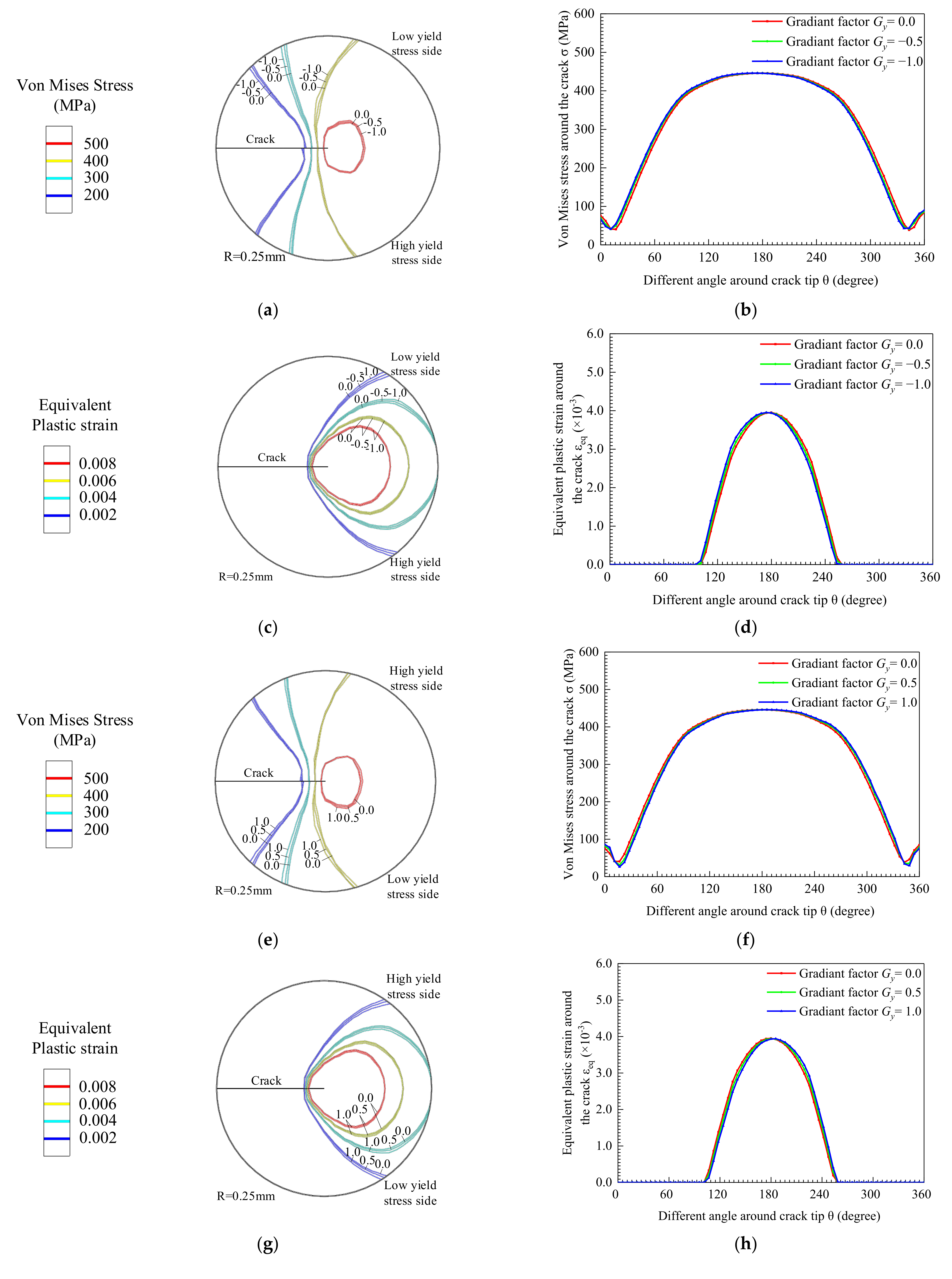
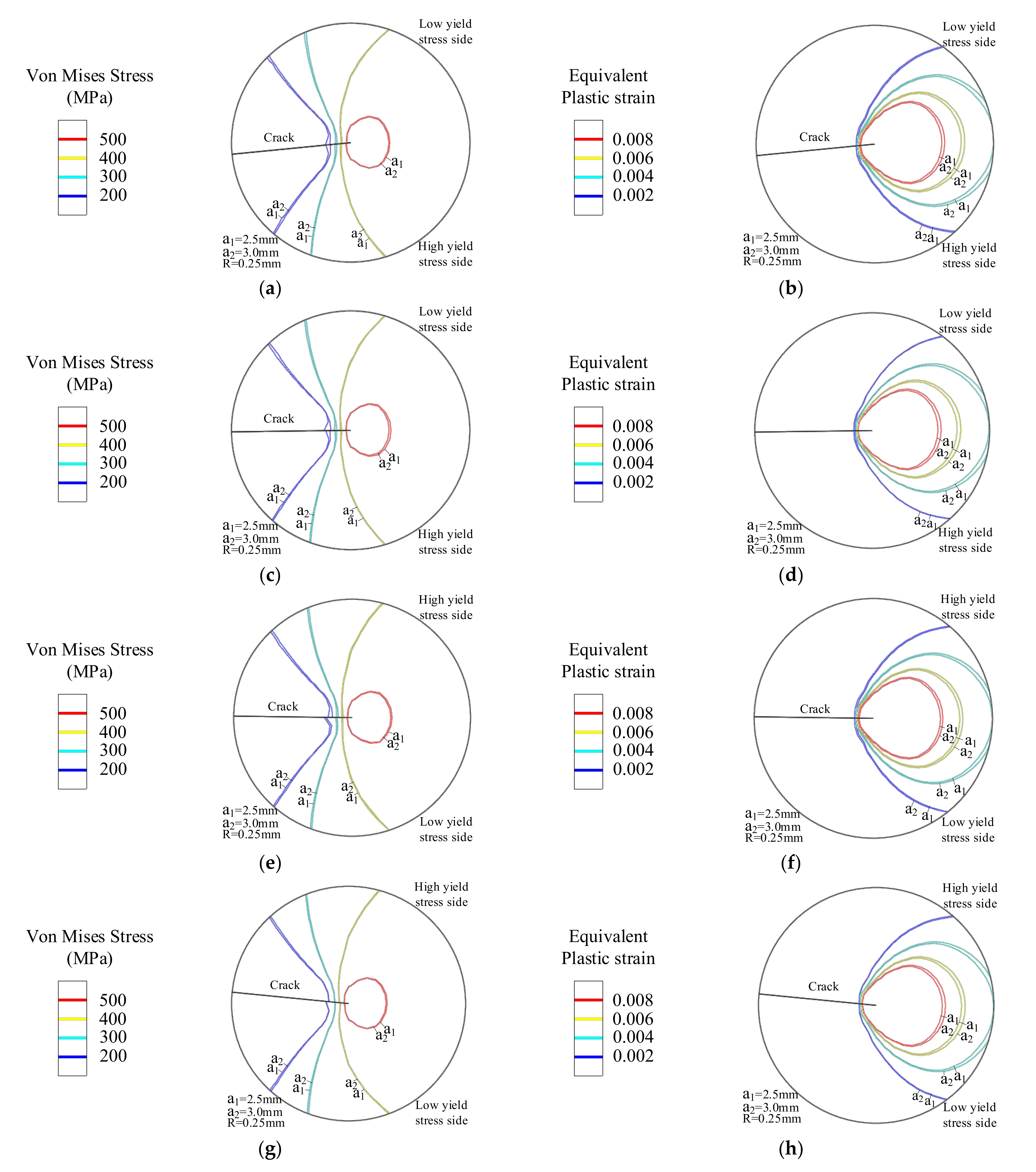

| Group | Elastic Modulus E (GPa) | Poisson’s Ratio | Yield Strength Range (MPa/mm) | Yield Strength Gradient Factor |
|---|---|---|---|---|
| Group 1: Yield strength changes along the x direction | 210 | 0.3 | 26.6 | −1.0 |
| −0.5 | ||||
| 0.0 | ||||
| 0.5 | ||||
| 1.0 |
| Group | Elastic Modulus E (GPa) | Poisson’s Ratio | Yield Strength Range (MPa/mm) | Yield Strength Gradient Factor |
|---|---|---|---|---|
| Group 2: Yield strength changes along the y direction | 210 | 0.3 | 40.0 | −1.0 |
| −0.5 | ||||
| 0.0 | ||||
| 0.5 | ||||
| 1.0 |
Publisher’s Note: MDPI stays neutral with regard to jurisdictional claims in published maps and institutional affiliations. |
© 2021 by the authors. Licensee MDPI, Basel, Switzerland. This article is an open access article distributed under the terms and conditions of the Creative Commons Attribution (CC BY) license (https://creativecommons.org/licenses/by/4.0/).
Share and Cite
Bi, Y.; Yuan, X.; Lv, J.; Bashir, R.; Wang, S.; Xue, H. Effect of Yield Strength Distribution Welded Joint on Crack Propagation Path and Crack Mechanical Tip Field. Materials 2021, 14, 4947. https://doi.org/10.3390/ma14174947
Bi Y, Yuan X, Lv J, Bashir R, Wang S, Xue H. Effect of Yield Strength Distribution Welded Joint on Crack Propagation Path and Crack Mechanical Tip Field. Materials. 2021; 14(17):4947. https://doi.org/10.3390/ma14174947
Chicago/Turabian StyleBi, Yueqi, Xiaoming Yuan, Jishuang Lv, Rehmat Bashir, Shuai Wang, and He Xue. 2021. "Effect of Yield Strength Distribution Welded Joint on Crack Propagation Path and Crack Mechanical Tip Field" Materials 14, no. 17: 4947. https://doi.org/10.3390/ma14174947
APA StyleBi, Y., Yuan, X., Lv, J., Bashir, R., Wang, S., & Xue, H. (2021). Effect of Yield Strength Distribution Welded Joint on Crack Propagation Path and Crack Mechanical Tip Field. Materials, 14(17), 4947. https://doi.org/10.3390/ma14174947






